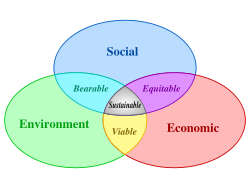“Hi. I’d like a global micro-credit initiative, a large order of AIDS education a-a-a-nd…a maternal health clinic”
“Would you like to eradicate malaria with that?”
Sure, it sounds ridiculous. But the McDonaldization of society is has significant implications for social change in general and philanthropy and social entrepreneurship in particular.
Here’s an example: our most recent bucket–a partnership to provide cataract surgeries and training in Uganda–tipped this morning. (yay!) And we’ve already received numerous requests for photos, video, and other updates on the status of the program. (They’re not even on the plane yet, people!?) Nothing says “American” like instant gratification, eh?
This is exactly the attitude that the founders of Kiva perceptively tapped in setting up their program as a person-to-person loan experience. You select an entrepreneur (May I take your order?) make a loan (Sure. I’d like…) and within days or weeks start getting updates on the repayment of your loan and the success of that entrepreneur’s micro-business (Thank-you! Have a nice day.)
It’s apparent to all but the most casual observer that the cycle there is WAY shorter than the time it would actually take that particular $25 to make it through the system of international banks, national micro-finance institutions and local loan officers to the individual borrower (even if that pathway weren’t a morass of bureaucracy), let alone for that borrower to bring together all the other forms of capital (human, social, natural, etc.) necessary to launch and grow a business and begin repaying the loan. Yet, many Kiva users were distraught (and even angry) to discover that the individual borrowers profiled on the site had actually been given loans months ago.
Granted, there are many other issues in the current conversation about Kiva (and microfinance in general)–interest rates, revolving-door loans, profit, and more–but the “revelation” about this time delay opened the can of worms.
So, which is it, America? You want an authentic giving experience (the exact dollars you contribute going to the exact project you chose to support) or you want to see photos of newly-sighted Ugandans within hours of your gift? You can’t have both.
Changing the world is not a drive-thru. (We have figured out, incidentally, how to put it on the dollar menu, though. Check it out.)


 The
The 
 ty requires deep understanding of the underlying systems
ty requires deep understanding of the underlying systems 






